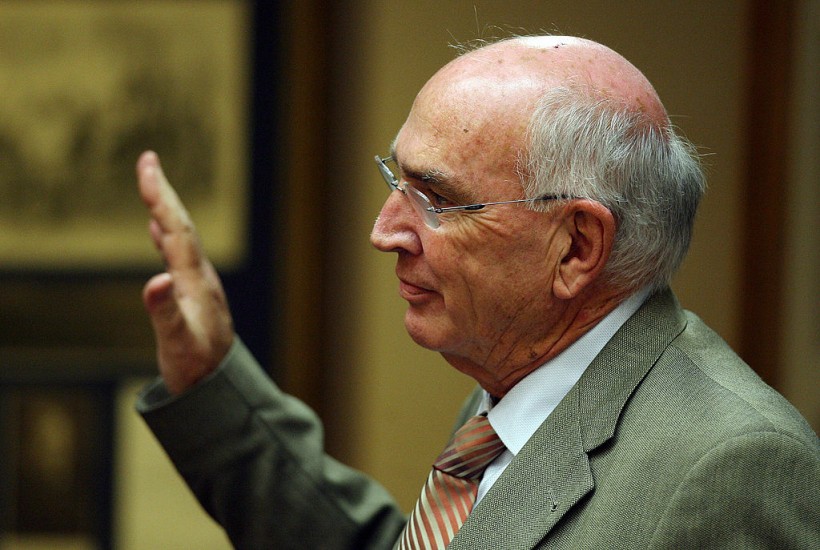Before Barry Bonds and before sports doping allegations and scandals surfaced in the last four decades, Don Catlin was there in his laboratory in UCLA.
Don Catlin: Anti-Doping Pioneer
Don Catlin was the one who opened the first sports anti-doping lab back in 1982. Before this endeavor, the idea of becoming "stronger, faster, bigger" had a bottle source. Steroids and other drugs to enhance performance were invading the field of sports, leaving minimal room to stop their use.
The lab of Don served as the testing center for the Los Angeles Olympics in 1984. It eventually conducted testing for the NFL, US Olympic and Paralympic Committee, the NCAA, Major League Baseball, and several others. The lab also became the place where codes got cracked on some drugs that were the most complex and undetectable.
ALSO READ: The Importance Of Proper Hydration For Athletes
Remembering Don Catlin
On January 16, Don died at 85 years old due to a stroke in Los Angeles. This was after his long-standing battle with dementia.
His son, Oliver Catlin, was a follower of anti-doping research. Oliver shared the struggle that their family faced in relaying the news. He said in a telephone interview that he was wondering if the 100 million individuals who were to tune into the Super Bowl could understand the impacts left by his father with the testing program aided in running for the NFL.
Don Catlin was a medical doctor that the military assigned during the Vietnam War to examine if Walter Reed Hospital soldiers were making use of illicit drugs. Oliver explains that the work of Don was used by the military to punish these soldiers, which is something that angered the doctor. Don wanted to see the soldiers get help and not be disciplined.
This ultimately led Don to sports. His interest towards anti-doping was triggered by the deaths of some high-profile athletes. When Don left the lab in UCLA in 2007, the lab became a primary facility for testing various sports. It also became one of the top anti-doping study sites.
Travis Tygart, the CEO of the US Anti-Doping Agency, says that Don was the anti-doping pioneer. Tygart adds that the work of Don went beyond offering federations and sports leagues the cover of an anti-doping program. It may have also forced them to do things the right way.
Anti-Doping Cases
Back in the early 2000s, a used syringe with mysterious substance traces was brought by the USADA to Don's lab. The doctor was able to identify it as a new chemical compound known as tetrahydrogestrinone (THG). The drug's evolution was traced by investigators and was found to lead to the Bay Area Laboratory Co-Operative, which had connections with several athletes, including Marion Jones and Bons.
Both Jones and Bonds had denied PED usage from BALCO. However, the discovery and the scandal that resulted awakened several individuals to a world of sports where athletes graduate from the use of clunky steroids to more intricate drugs that are equally dangerous but harder to detect.
The doctor was more interested in the safety of athletes and in preserving fairness in competition compared to shedding light on cheaters.
Don found himself more frustrated due to politics as he worked longer in anti-doping. As his son tried crystalizing the legacy of his father while working on the certification and private testing lab that was run by the duo for several years, he has been seeing various challenges with sports institutions as anti-doping breakthroughs are being seen. Oliver realized that Don had the capacity to challenge these organizations and leagues but expressed doubts regarding whether those who are into anti-doping will still have such levels of authority.
Just last week, Oliver read the final report of the Court of Arbitration for Sport's case of Kamila Valieva, a Russian figure skater who was 15 years old when she tested positive for trimetazidine, which is a heart medication that has been banned as a PED. Oliver was shocked by how Valieva admitted taking hypoxen, another drug that is not banned but has been observed by experts of anti-doping.
Oliver shares that this is a clear example of why they are running a system for anti-doping. The system is there not just to stop cheaters but also to stop athletes from being overloaded with these drugs.
Check out more news and information on Medicine & Health in Science Times.





![Earth's Quasi-Moon Kamo‘oalewa Could Originate From Lunar Surface Not Asteroid Belt [Study]](https://1721181113.rsc.cdn77.org/data/thumbs/full/53275/89/56/50/40/earths-quasi-moon-kamo-oalewa-could-originate-from-lunar-surface-not-asteroid-belt-study.png)









